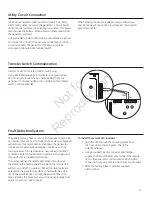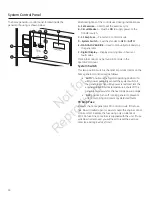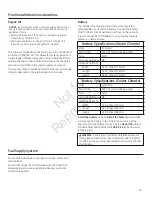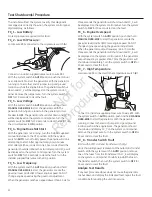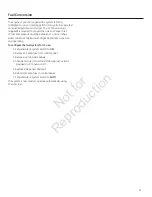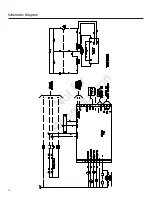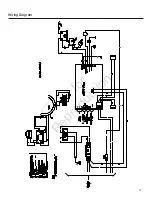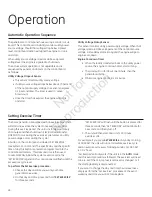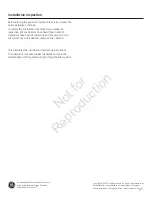
13
fuel Pressure
Both LP vapor and natural gas fuel supply pressure at the
generator’s fuel inlet port should be between 7 to 11 inches
(18 to 28 cm) of water (in. W.C.) at full load with all gas
appliances turned on and operating. Maximum pressure with
engine OFF at No Load is 13.85 psi.
Power Loss
Air density is less at high altitudes, resulting in less available
engine power. Specifically, engine power will decrease 3.5%
for each 1,000 feet (300 m) above sea level and 1% for each
10° F (5.6°C) above 77°F (25°C). Generators located in these
conditions must have their transfer switch programmed
appropriately for this power decrease.
fuel Pipe sizing
There are numerous on-line or otherwise-published
references for fuel pipe sizing. For example, NFPA 54 -
National Fuel Gas Code, 2006 (Item #: 320-6031-06) is a
common resource.
The installer should consider the specific gravity of gas
and compensate for a nominal amount of restriction from
bends, fittings, etc. If an unusual number of fittings, bends, or
other restrictions are used, refer to federal and local codes
for guidance.
• A manual fuel shut-off valve located in the interior of
the building.
• Where local conditions include earthquake,
tornado, unstable ground, or flood hazards, special
consideration shall be given to increase strength and
flexibility of piping supports and connections.
• Piping must be of the correct size to maintain the
required supply pressures and volume flow under
varying generator load conditions with all gas
appliances connected to the fuel system turned on
and operating.
• Use a pipe sealant or joint compound approved for
use with NG/LPG on all threaded fittings to reduce the
possibility of leakage.
• Installed piping must be properly purged and
leak tested, in accordance with applicable codes
and standards.
The generator has been factory set to run on natural gas. If
you need to change from natural gas to LP gas, the unit will
need to be reconfigured, as described in
Fuel Conversion
.
It is recommended that the fuel connection incorporate the
following components:
• A manual fuel shut-off valve located in the interior of
the building.
• A manual fuel shut-off valve located outside the
building, just before the generator unit.
• Where the formation of hydrates or ice is known to
occur, piping should be protected against freezing.
The termination of hard piping should include
a sediment trap where condensate is not likely
to freeze.
• A manometer port should be provided.
The manometer port permits temporary installation of
a manometer to ensure that the engine receives the
correct fuel pressure to operate efficiently throughout its
operating range.
When the initial test runs are completed, the manometer
is removed and the port is plugged. A typical final fuel
connection assembly is shown here, where (
a
) is the fuel
supply and (
B
) goes to the home generator.
Not
for
Reproduction

















